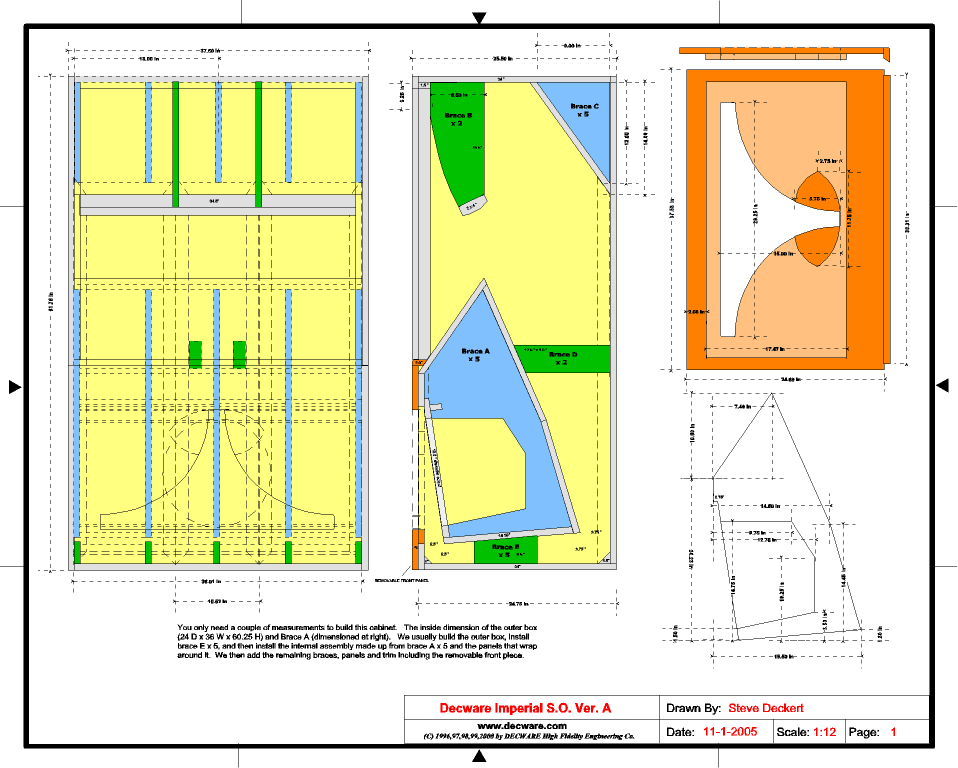I just noticed there isn't a real How-To Manual on Hornresp anywhere. There are some guides on how to do so and so using HR, but not a Hornresp basics primer. Guess it's time.
Hornresp is a speaker modeling program by David McBean. It started off a few decades ago as a horn modeling program with punch card data inputs. Yes, it is that old, Luckily for us, the program was continuously updated from the beginning, and is now a very capable tool for much more than just traditional horns. There have been several major additions over the last year which really helps with the programs usability for those just starting out, and as such it has become extremely popular. The new Wizard function is the star attraction now, as it allows you to view the changes you are making in real time. I'm going to try to touch on a few of the possible ways to use the program here, and try to explain the functionality of the programs many different options.
Luckily for us, the program was continuously updated from the beginning, and is now a very capable tool for much more than just traditional horns. There have been several major additions over the last year which really helps with the programs usability for those just starting out, and as such it has become extremely popular. The new Wizard function is the star attraction now, as it allows you to view the changes you are making in real time. I'm going to try to touch on a few of the possible ways to use the program here, and try to explain the functionality of the programs many different options.
You can download the latest version of the program from David McBean's site:http://www.hornresp.net.ms/
The next few posts will explain the basic functions of the program, followed by practical examples, with example specific special options. You can use the following links to skip to another area faster if you wish, and to find new additions if/when thread creep sets in. As always, questions and comments are welcome.
Sealed Enclosures
Vented Enclosures (Simple)
Vented Enclosures (Alternate Method)
Normal Horns (Single)
Normal Horns (Multi-Segmented)
Offset Driver Horns
Tapped Horns
Rear Loaded Horns
Compound Horns
Bandpass Enclosures
IB Setups
All examples will use the CSS Trio12 to simplify things. The factory data is from here: http://www.creativesound.ca/pdf/CSS-Trio12-data-051009.pdf
Hornresp is a speaker modeling program by David McBean. It started off a few decades ago as a horn modeling program with punch card data inputs. Yes, it is that old,
You can download the latest version of the program from David McBean's site:http://www.hornresp.net.ms/
The next few posts will explain the basic functions of the program, followed by practical examples, with example specific special options. You can use the following links to skip to another area faster if you wish, and to find new additions if/when thread creep sets in. As always, questions and comments are welcome.
Sealed Enclosures
Vented Enclosures (Simple)
Vented Enclosures (Alternate Method)
Normal Horns (Single)
Normal Horns (Multi-Segmented)
Offset Driver Horns
Tapped Horns
Rear Loaded Horns
Compound Horns
Bandpass Enclosures
IB Setups
All examples will use the CSS Trio12 to simplify things. The factory data is from here: http://www.creativesound.ca/pdf/CSS-Trio12-data-051009.pdf










